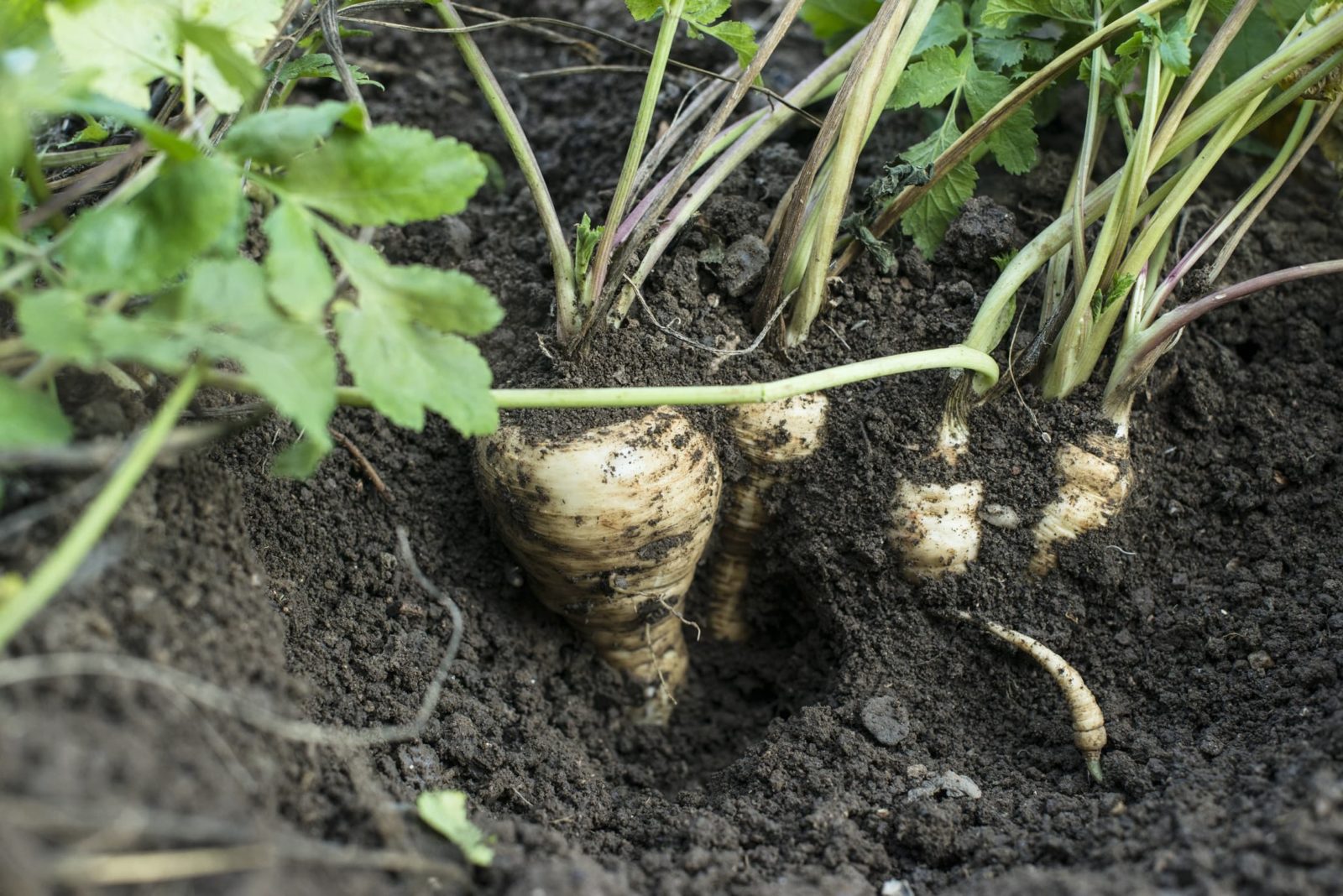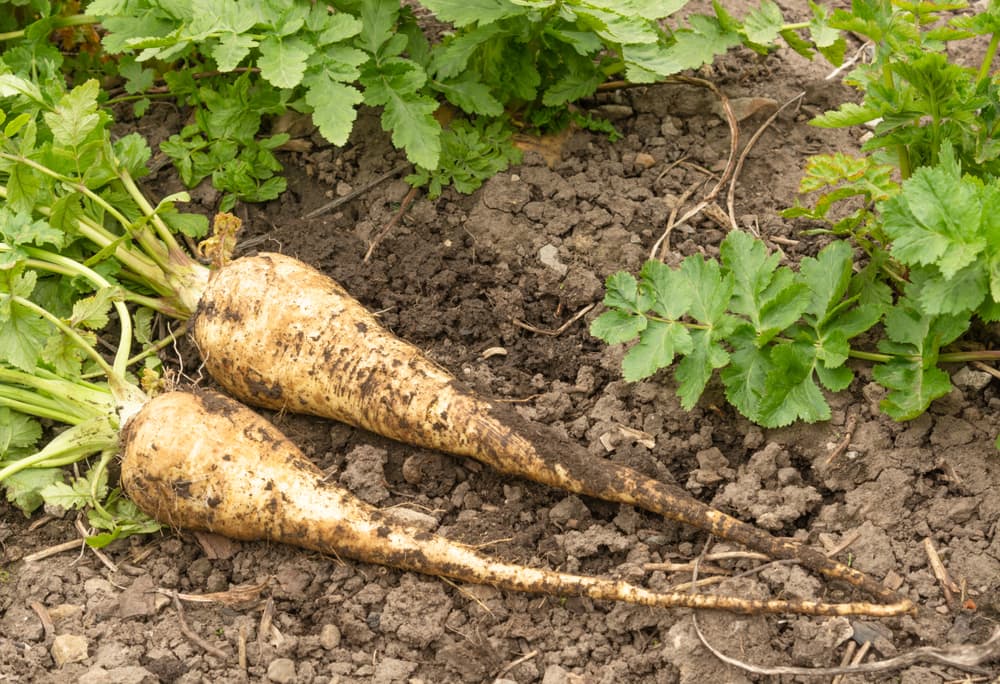Parsnips: Grow This Wonderful Root Vegetable In A Sunny And Open Site

VEGETABLES > PARSNIPS

Elizabeth is a Permaculture Garden Designer, Sustainability Consultant and Professional Writer, working as an advocate for positive change. She graduated from the University of St. Andrews with an MA in English and Philosophy and obtained a Diploma in Applied Permaculture Design from the Permaculture Association.
Reviewed By ROY NICOL

Roy is a Professional Gardener and Horticultural Consultant, specialising in large garden year-round maintenance and garden development. He is an RHS Master of Horticulture and uses his research in the application of no-dig methods in ornamental garden settings. Roy has been a Professional Gardener for more than six years and is a member of the Chartered Institute of Horticulture, Professional Gardener's Guild and Association of Professional Landscapers (Professional Gardener).
IN THIS GUIDE
PARSNIPS GUIDES
Parsnips are not everyone’s favourite, but grow them correctly and they are truly delicious – a wonderful root vegetable to add to your home-growing repertoire.
They are great for home growers – they are pretty easy to grow, and won’t require a lot of care.
But as with any vegetable, as a gardener you need to know what they like, and what they don’t – you need to make the right decisions when it comes to the varieties you grow, where you grow them, and how you care for them in your garden.
Overview
| Botanical Name | Pastinaca sativa |
| Plant Type | Vegetable / Biennial |
| Native Area | Europe to central Siberia |
| Hardiness Rating | H5 |
| Foliage | Segmented pinnate leaves |
| Flowers | None |
| Harvesting Months | January, February, September, October, November, December |
Sunlight
Preferred
Full Sun or Light Shade
Exposure
Sheltered or Exposed
Size
Height
0.1 – 0.5M
Spread
0.1 – 0.5M
Soil
Preferred
Most soil types
Moisture
Moist but well-drained
pH
Any
Parsnips are a root vegetable that is related quite closely to carrots and parsley.
This crop is usually grown as an annual, though like carrots and parsley, it is actually a biennial plant, which would typically complete its full lifecycle (from germination to setting seed) over two years.
Parsnips are native to Europe through to Central Siberia and this plant has long been cultivated as an arable crop.1Parsnips: Overview. (n.d.). Science Direct. https://doi.org/10.1016/b978-0-12-384947-2.00714-5
Parsnips can be used like carrots and other root crops, though when cooked they can have a very sweet taste – especially after they have been touched by frost and the plant starches have begun to break down.
The type of parsnip grown in gardens today is a cultivated type, which derives from the wild parsnip.
Parsnip Varieties
There are a number of named cultivars of parsnip available to gardeners in the UK.

Some good varieties to consider are:
- ‘Albion’ (AGM)
- ‘Archer’
- ‘Halbange’
- ‘Hollow Crown’
- ‘Gladiator’ (AGM)
- ‘Palace’
- ‘Pearl’ (AGM)
- ‘Picador’ (AGM)
- ‘Tender and True’
- ‘White Gem’
The varieties marked AGM have been assigned the RHS Award of Garden Merit, meaning they have undergone trials and have been assessed to perform reliably.

How To Grow Parsnips
Parsnips grow best in a sunny and open site with at least 6 hours of sun daily, but can also tolerate partial shade.
Most commonly, they are grown in traditional annual vegetable gardens – in raised beds or in the ground – but they can also be grown in pots or containers as long as these are sufficiently deep.
Parsnips can also be grown in fruit tree guilds, or the fringes of a forest garden.
I grow them as part of my forest garden and find this can be beneficial because when you leave some of the roots in the ground until their second year, the plants will flower and can attract a range of beneficial predatory insects.

They can therefore be helpful in organic pest control and can help keep fruit trees safe.
Soil Requirements
As root crops, parsnips need deep and moist yet free-draining, light and well-aerated soil.
One thing to note is that soil that is overly fertile can encourage the roots to fork – so while you should make sure an area is smooth and without stones, you should avoid adding compost or manure in the area where you plan to place them before sowing.
Companion Planting
Personally, I like to sow parsnips in the same bed as carrots and onions.
Not only do they like similar conditions, planting these crops together also makes crop rotation easier and the onions help to keep carrot flies confused – and your crops safe.
Leeks and other long-season alliums can also work well in the same growing area.
Annual flowers can also make good companion plants for parsnips (these also repel, confuse or distract carrot flies and other pests with their strong scent).
Think about annual field meadow plants, like poppies, cornflowers etc. since these can also thrive in an area that is not overly fertile.

Strong aromatic herbs like rosemary or sage, for example, can also be placed close to parsnips, and could help in organic pest control.
Avoid planting parsnips near fennel, since fennel can have an allelopathic effect on a number of other plants growing close by.2Nourimand, M., Mohsenzadeh, S., Da Silva, JAT., & Saharkhiz, MJ. (2011, June). Allelopathic Potential of Fennel (Foeniculum vulgare Mill.). ResearchGate. Retrieved March 22, 2023, from https://www.researchgate.net/publication/283712660_Allelopathic_Potential_of_Fennel_Foeniculum_vulgare_Mill
Parsnip Plant Care
Parsnips do have a long growing season and will remain in place in your garden for a long time, so this is something to consider.
The good news is, however, that they will not require a huge amount of care over the course of the year.
Once your parsnip seeds have germinated, and the seedlings are around 2-3cm tall, thin them to give an eventual spacing of around 10-15cm between plants for good-sized roots.
Watering
Parsnips do not have overly high water needs.
Usually, they will not require a lot of watering unless the weather over the summer is particularly dry.
Giving parsnips a good soak every 2-3 weeks in dry conditions will usually be sufficient.
Feeding
As mentioned above, parsnip roots can fork in overly fertile growing conditions, meaning parsnips should not usually be fed at all.
However, it can be a good idea to mulch between your parsnip rows with compost in the early summer.
This provides some fertility and gives your crop a boost.
It will also bring the added benefit of suppressing weeds, which is generally the more important consideration.
Weeding
Weeding can be very important when it comes to parsnips, and is really the main job when it comes to their care.
Make sure you keep the area around them weed-free – especially while the seedlings are still small.
Parsnips are slow-growing and can easily be smothered by more vigorous weeds.
“It is common to use a technique called inter-cropping when growing parsnips where a quick-growing crop such as radishes is grown in between rows of parsnips,” shares Roy Nicol, a Master Horticulturist.
“By the time the parsnips have germinated the quick crop is ready to be harvested.”
Common Problems
Parsnip is not usually too troubled by pests, but one problem that can occur is carrot fly.
Companion planting, as mentioned above, can usually protect your parsnips from this pest.
Parsnip Canker

Parsnip canker is another thing to look out for – this is a rot which starts at the top of the root with brown, orange or purple discolouration.
It is usually caused by water issues, overly rich soil conditions, or damage to the growth of the plant.
Make sure you avoid damaging the roots, don’t sow too early, water correctly and make sure the soil is healthy but not overly fertile and you should be less likely to see this issue.
If this is a persistent issue in your garden, consider growing more resistant cultivars like ‘Archer’.
As you can tell from the above, parsnips are a great choice for novice gardeners and are relatively easy to grow.
Why not try growing some for your Christmas dinner and other delicious winter meals?
References
- 1Parsnips: Overview. (n.d.). Science Direct. https://doi.org/10.1016/b978-0-12-384947-2.00714-5
- 2Nourimand, M., Mohsenzadeh, S., Da Silva, JAT., & Saharkhiz, MJ. (2011, June). Allelopathic Potential of Fennel (Foeniculum vulgare Mill.). ResearchGate. Retrieved March 22, 2023, from https://www.researchgate.net/publication/283712660_Allelopathic_Potential_of_Fennel_Foeniculum_vulgare_Mill
